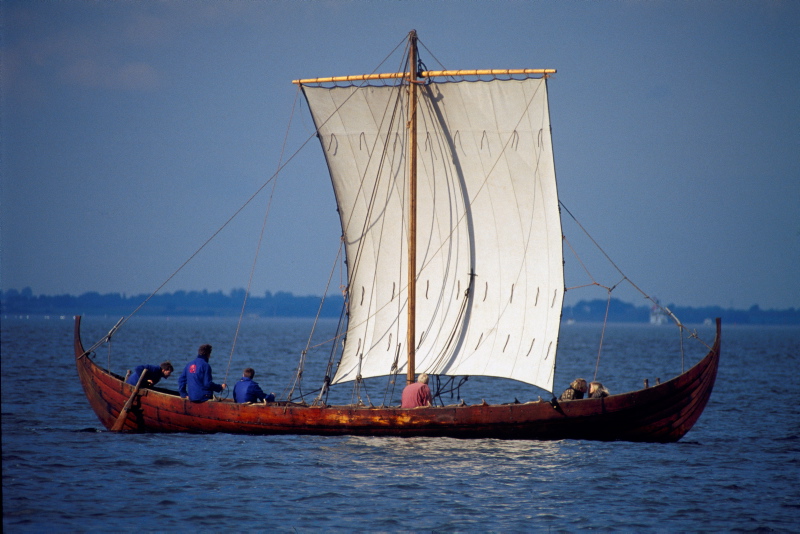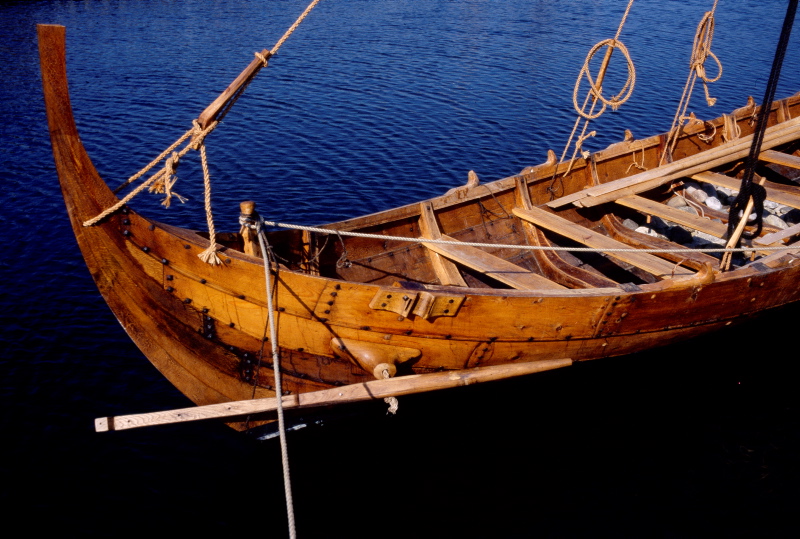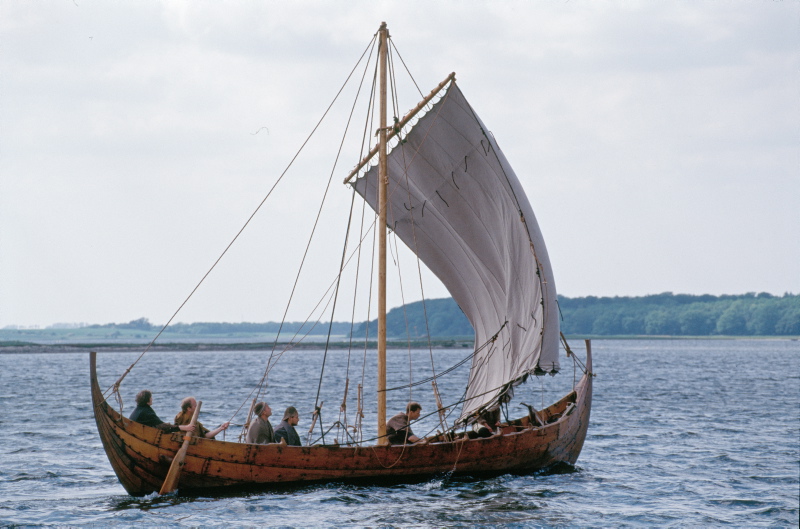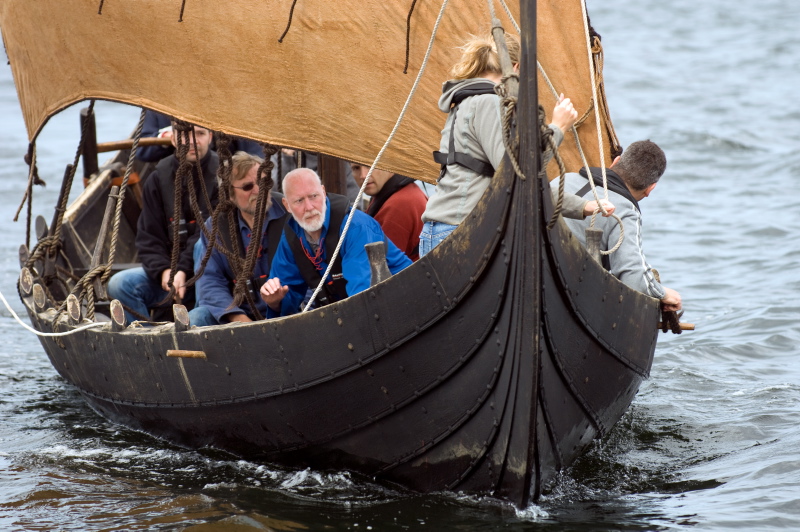Kraka Fyr
Reconstruction of Skuldelev 6, a fishing and cargo vessel from the Viking Age, ca 1030.
Built of pine, birch and oak in the Viking Ship Museum boatyard in 1998 as a reconstruction of the Skuldelev 6 ship. The original was built in Sognefjord in Norway around 1030, strangely enough, at the same time and place as the ocean-going Skuldelev 1 was being built. They in fact share certain family features. For example, they both have the special, longitudinal change in angle, the chine, along the bottom of the boat under the waterline.
Skuldelev 6 was originally built as a relatively low-boarded fishing boat with six strakes. It could be rowed from no less than 14 oar positions along the gunwale, a decided advantage because when fishing gear or catches were brought on board they often blocked access to several rowlocks.
In this boat the frame construction is very refined. The lateral bites are located very low down in the boat. They are quite wide in the middle and are bowed fairly steeply upwards; they act in almost the same way as modern leafsprings. This feature, combined with strong frames that extend up to the top of the sixth strake, eliminates the need for fixed crossbeams higher up the boat. As far as strength is concerned, the hull is virtually self-supporting - almost like an eggshell. One disadvantage however is that it must have been necessary for the crew to insert loose thwarts to sit on and row.
At some point, it is not known precisely when, the fishing boat was converted into a cargo carrier by removing the rowlocks, adding a seventh strake stiffened with loose vertical members, i.e. futtocks. This resulted in a more capacious and more seaworthy vessel, presumably of the type the Vikings called a "byrding", a boat that carries something. The opportunity was not taken to add fixed crossbeams perhaps because the low, heavy bites were ideal for carrying a cargo of, for example, barrels of herring or some other fish. At the moment Kraka Fyr is a reconstruction of Skuldelev 6 in its original shape as a fishing boat, although it is possible that in the future an attempt will be made to convert it into a "byrding" in the same way as its predecessor.
In rigging Kraka Fyr, much use was made of original and authentic materials, e.g. linden bast rope for rigging the mast and for the bowline, and horsehair-rope for sheets and braces. In this way it was possible to find out how and to what extent these materials became worn over long periods of use. The boat was involved in another series of long-term experiments conducted in order to determine the ideal type of side rudders for the different vessels. No side rudders were found with the Skuldelev boats, hence the necessity of the experiments.
Information about Kraka Fyr
Dockyard: The Viking Ship Museum
Boatbuilder: Birger Andersen, Tom Nicolajsen, Thomas Finderup, Ture M. Møller, Søren Nielsen, Pernille Voss, Kristian Østergård and Rasmus Budde
Owner: The Viking Ship Museum
Year of construction: 1998
Length: 11.20 meter (37 feet)
Width: 2.40 meter (8 feet)
Depth/draft: 0.45 meter (1 feet)
Weight: 1.00 tons
Total sail area: 25 m2
Number of oars: as fishing boat 14, but as cargo boat only 4
Displacement: 2,5 tons
Crew: Fishing boat 15, but as cargo boat only 5-6 men
Estimated maximum speed, sail: 10 knots
Estimated maximum speed, 14 oars: 5 knots, 4 oars: 2.5 knots



